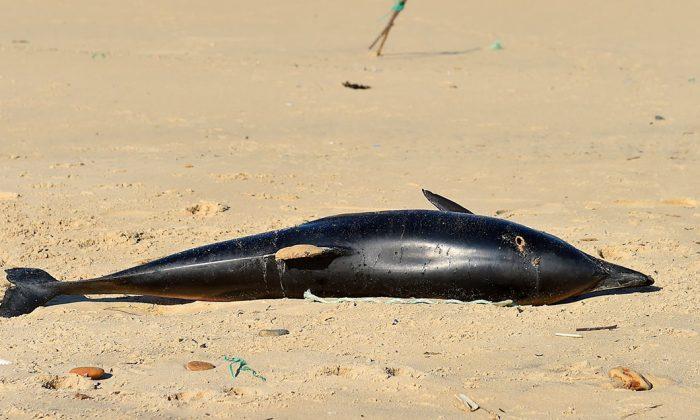The number of stranded dolphins across the Gulf Coast has jumped, tripling the number of deaths so far this year, a scientific agency warned on June 14.
The National Oceanic and Atmospheric Administration (NOAA) confirmed at least 279 dolphins were stranded across much of the Gulf of Mexico since the beginning of February. The figure represents triple the usual number and about 98 percent of them have died already.
Scientists are preparing to investigate whether the 2010 British Petroleum oil spill disaster, reduced salinity from freshwater flowing from high rivers to the gulf, and a Louisiana spillway helped cause the deaths.
Rowles said 70 percent of the carcasses were too decomposed for necropsy.
Earlier reports blame the oil spill for causing lung and adrenal gland conditions in the dolphins, creating stress-related hormones, blood abnormalities, and generally poor condition. The reports also accused the spill of causing the gulf’s largest and longest dolphin die-off.
About 23 percent of the dolphins stranded between Louisiana and the Florida Panhandle showed evidence of sores, which are consistent with freshwater exposure, according to NOAA Fisheries’ Southeast Region Marine Mammal Stranding Program Administrator Erin Fougères.
“[Freshwater exposure] does not appear to be the cause of death for all animals, so that’s something we’re continuing to investigate,” Fougères said.
She said Mississippi had 121 dolphin strandings as of June 12, with 89 in Louisiana, 32 in Alabama, and 37 in Florida.
Institute of Marine Mammal Studies Director Moby Solangi declared Mississippi’s dolphin death toll was 126 in Gulfport by June 13. Solangi partly blamed the deaths on the recently opened Bonnet Carré Spillway, which he believes to have had a worse effect than the entire BP oil spill. He said 91 dead dolphins were found in Mississippi throughout the year of 2010 when the BP disaster happened.
Fougères suggested other possible causes of death might include chemicals and other pollutants in the river water, and changes in the dolphins’ usual prey as fish and crabs that need higher salinity have already left the bays and estuaries where about 88 percent of the area’s 17 dolphin groups live.
Such groups tend to stay in their home territories in spite of changes that could harm them, according to Fougères.
Fougères said NOAA is also investigating reports of increased turtle strandings in Louisiana and Mississippi.
The numbers exceed five- and 10-year averages and are lower than some previous years, she said.
“We do not suspect sea turtle strandings are related to freshwater exposure,” Fougères said. “We are concerned that decreased salinity could have effects on their prey and habitat.”






Friends Read Free